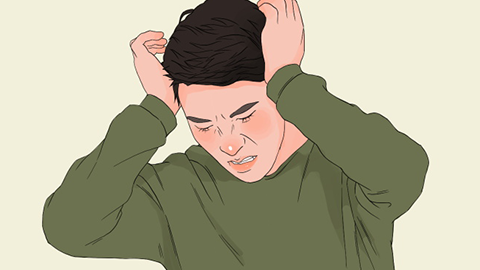What causes pain in half of the head when bending the head down?
Generally, experiencing a headache on one side of the head upon lowering the head may be caused by improper sleeping posture, neck muscle tension, trigeminal neuralgia, migraine, insufficient cerebral blood supply, and other similar reasons. Symptomatic management such as general treatment and medication may be needed. If discomfort occurs, it is recommended to seek medical attention promptly and undergo appropriate treatment under a physician's guidance. Detailed explanations are as follows:

1. Improper Sleeping Posture
An improper sleeping posture can compress the occipital nerve, causing nerve pressure. When lowering the head, this pressure increases, resulting in headaches. Symptoms may resolve spontaneously after adequate rest. It is recommended to adjust sleeping posture to avoid compression of the occipital nerve.
2. Neck Muscle Tension
Prolonged maintenance of the same posture, especially when looking down at a phone or computer, can lead to neck muscle tension and pain. When the head is lowered, the neck muscles are further stretched, which may trigger or worsen headaches. This is often accompanied by neck stiffness and limited range of motion. It is recommended to perform regular neck stretching and strengthening exercises and avoid prolonged periods of looking downward.
3. Trigeminal Neuralgia
Trigeminal neuralgia is a facial pain syndrome in which the act of lowering the head may compress or stretch the trigeminal nerve, causing pain. The pain is often described as electric shock-like or knife-like—intense and brief—and is usually accompanied by facial twitching and tearing of the eyes. It is recommended to take medications such as carbamazepine tablets, gabapentin tablets, or phenytoin sodium tablets under a physician's guidance.
4. Migraine
Migraine is a complex neurological disorder in which lowering the head can trigger blood vessel dilation and nerve inflammation, stimulating pain fibers and causing headaches. It may also be accompanied by nausea, vomiting, and sensitivity to light and sound. It is recommended to take medications such as ibuprofen tablets, indomethacin tablets, or nimodipine tablets as directed by a physician to alleviate symptoms.
5. Insufficient Cerebral Blood Supply
Rapidly lowering the head may disrupt blood circulation in the cerebral arteries, leading to cerebral ischemia and hypoxia, which can cause headaches upon lowering the head. This condition is often accompanied by dizziness, generalized weakness, and visual darkening. It is recommended to take medications such as aspirin enteric-coated tablets, clopidogrel bisulfate tablets, or rosuvastatin calcium tablets under the guidance of a physician.
It is also recommended to maintain an upright posture with the chest out and head up while standing or sitting, avoiding slouching or hunching forward, which can help reduce pressure on the neck.




